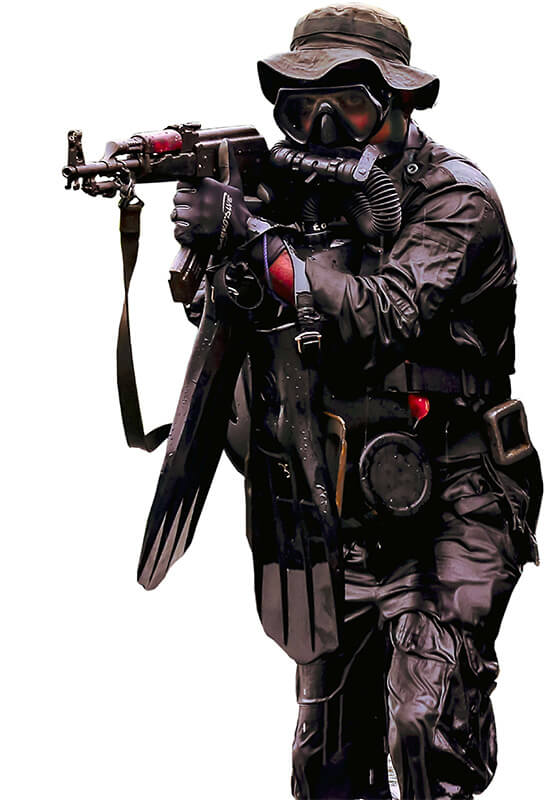Special Boat Squadron (SBS)

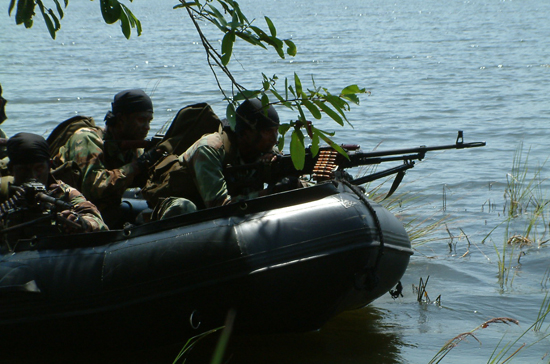
Speed is the essence of war. Take advantage of the enemy's unpreparedness; travel by unexpected routes and strike him where he is defenceless. In theory and practice Special Forces,on land, sea or from air are always a force multiplier that would deter the enemy to an extent of forcing its fighting mechanism self-defence rather than an offensive.one Special Forces are able to confuse the enemy in unprecedented manner in clandestine operations disturbing the enemy's war fighting capability and opening operational advantage to conventional forces. Navy realized the value of special operations in the early stages of confronting separatist terrorism that devastated the country for over three decodes.
In the early stages of the terrorism that has been raging in this country for nearly three decades, the Special Boat Squadron was established, recognising the need to build a specially trained team to respond to attacks on Navy personnel using various asymmetric warfare tactics. In the early stages, the small groups that attacked the enemy at close range against the LTTE were successful due to the exceptional abilities of the officers and sailors who volunteered at that time. At that time, Lieutenant Commander Shanthi Bahar can be called an officer who searched for the enemy's hiding places in the forested areas of Trincomalee and carried out such successful attacks, and the death of that talented officer in the battle led to a delay in the establishment of a Naval Special Operations Force in the Navy.
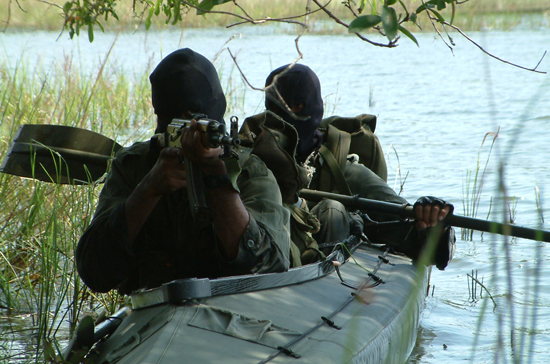
The LTTE began as a guerilla group and grew significantly over time into a semi-conventional army with a guerrilla force. In order to maintain the military strength of the LTTE, it was necessary for the Sea Tigers to be strong for three reasons. That is, firstly, to constantly clash with the Navy to maintain the LTTE's sea supply network; secondly, to deploy more resources of the Navy to maintain continuous maritime operations in the Northern Peninsula; and thirdly, the LTTE depends on its Sea Tigers’ Force due to the fact that they have mastered the use of suicide boats, sea bombs, and various unconventional warfare tactics.
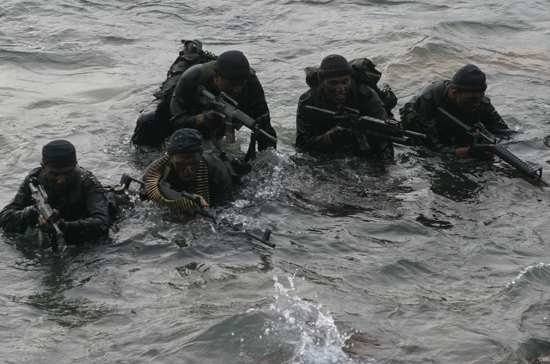
By the early 1990s, small craft and suicide craft were being used in the coastal waters of the Northern Peninsula to control terrorist activities such as attacking Naval patrol vessels, using maritime logistics and transport strategies, and disrupting Naval supplies and transport. According to the concept of the then Commander of the Navy, Vice Admiral Clancy Fernando, the necessity of establishing a Naval Special Operations Force within the Sri Lanka Navy has emerged along with the establishment of a Naval sub-unit in the Nagasivanthuraya area and carrying out attack patrols using Inshore Patrol Craft (IPCs) in the proximity of Kilali Lagoon.
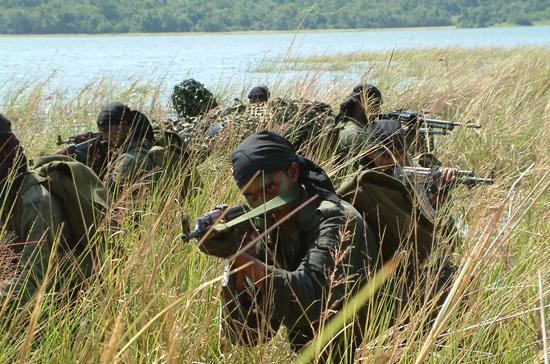
On 16th November 1992, Vice Admiral DAMR Samarasekera was appointed as the Commander of the Navy after the then Commander of the Navy, Vice Admiral Clancy Fernando, was killed in an attack by a suicide motorcyclist. Later, Captain HR Amaraweera, who served as the Acting Director Naval Operations of the Sri Lanka Navy, convinced the then Commander of the Navy of the basic requirement of establishing a Naval Special Operations Team within the Sri Lanka Navy and was exceptionally dedicated to the establishment of the Special Boat Squadron by facilitating obtaining approval, recruiting and training, and acquiring craft and weaponry for the squadron.
According to the concept of the then Lieutenant Commander RC Wijegunarathne, the Special Boat Squadron was started on 08th November 1993, under his initiative by giving a special training at Karainagar to a group consisting of two officers and 38 sailors who volunteered.
On November 12th 1993, the LTTE attacked the Nagasivanthurai and Pooneryn Naval and army bases. Friendly forces attempted to come ashore to support the Sri Lankan Army and Navy but were repelled by enemy resistance. However, on 13th November 1993, while undergoing training, two teams from the Special Boat Squadron (SBS) under the leadership of then Lieutenant Commander RC Wijegunarathne led the way for Army Commandos to land safely on the beach using two dinghies and one Landing Craft Mechanised (LCM). They repulsed the enemy attack, ensuring the safe landing of the Commandos and Special Forces members. On 13th November 1993, around 700 army personnel trapped in the Pooneryn camp were evacuated in an amphibious operation with the help of the 4th Fast Attack Flotilla, marking the first operation of the Special Boat Squadron.
In the initial phase of the Special Craft Squadron, basic training was conducted at SLNS Elara in Kareinagar and SLNS Vijaya in Kalpitiya. Advanced training was then undertaken with the Commando Regiment and Special Forces of the Sri Lanka Army. The squadron gradually developed into a strong squadron under the leadership of the talented officers of then Sub-Lieutenant KACS Jayasinghe and Sub-Lieutenant SW Gallage. In 1994, Lieutenant Commander Cedric Martinstein introduced the high-speed and high- manoeuvrability small craft concept called 'Arrow', which was the turning point in the development of the operational capability of the Special Boat Squadron. This squadron, which has been specially trained to carry out operations both on land and in the air, has carried out many operations, such as special operations to infiltrate the military personnel into the enemy territory, special operations in the enemy territory, and small operations using small craft during the last humanitarian operation, by giving a great deal of support to the front-line fighter squadrons.
The Special Boat Squadron has played a crucial role in the recent humanitarian operation in Sri Lanka, and its dedicated personnel can proudly acknowledge the recognition received for their efforts, 01 Parama Weera Vibhushanaya (PWV), 05 Weera Wickrama Vibhushanaya (WWV), 35 Rana Wickrama Padakkama (RWP), and 765 Rana Sura Padakkama (RSP) in the name of the Special Boat Squadron.
The SBS is functioning under the direct command and control of Naval Headquarters, Under Director General Operations who may deploy SBS troops as per the operational requirements. Director Naval Special Forces and Deputy Director Naval Special Forces are to assist the DGO in all operational and training matters. Also DGO is responsible to deploy SBS troops for their classic duties.
Following special tasks are considered as classic role for the SBS
Support in securing a beach head prior to an amphibious operation.
Beach reconnaissance.
Gathering intelligence by observation in enemy controlled to enemy dominated and high risk territories in coastal areas.
Clandestine operations to destroy enemy personnel, boats or enemy locations/installations/ infrastructure by waterborne infiltrations in such areas.
Offensive mining, mine clearance and demolition.
Anti-ship hijack and hostage rescue missions.
Special small boat operations in littoral and internal waters.
LRRP operations in deep inland.
Combat Diving operations.
Hostage Releasing and Counter Terrorism Operations.
VIP/VVIP Protection.

